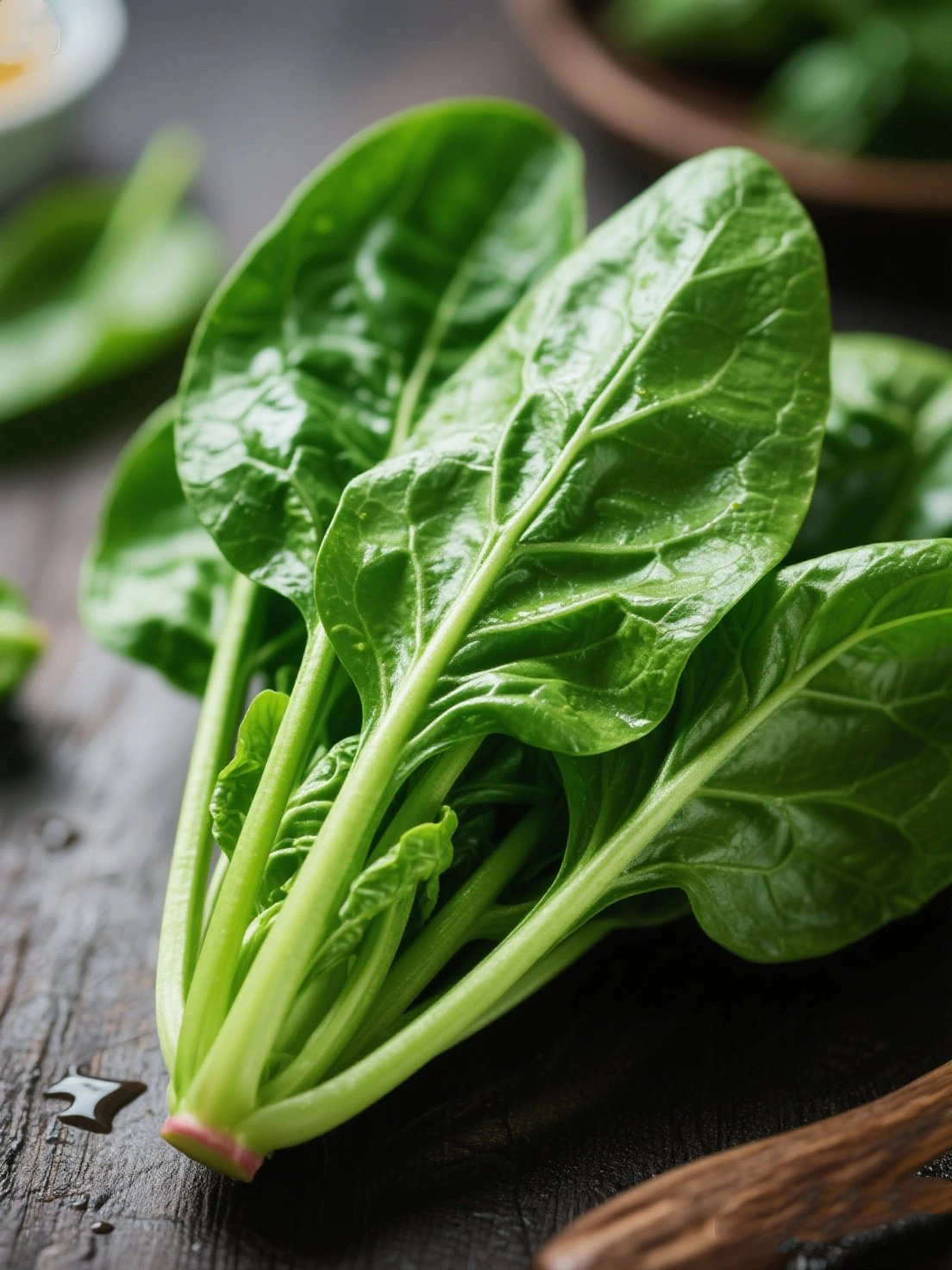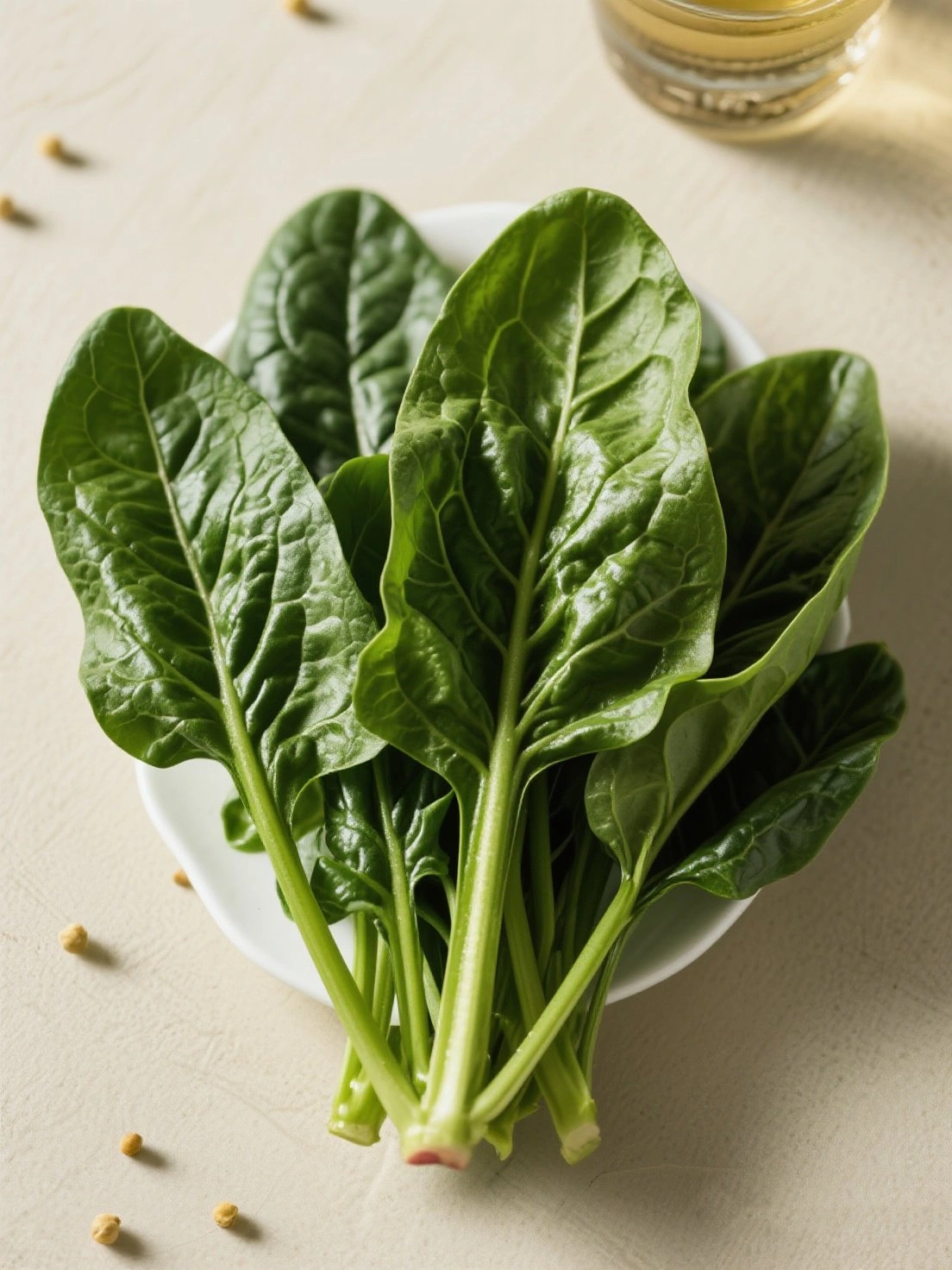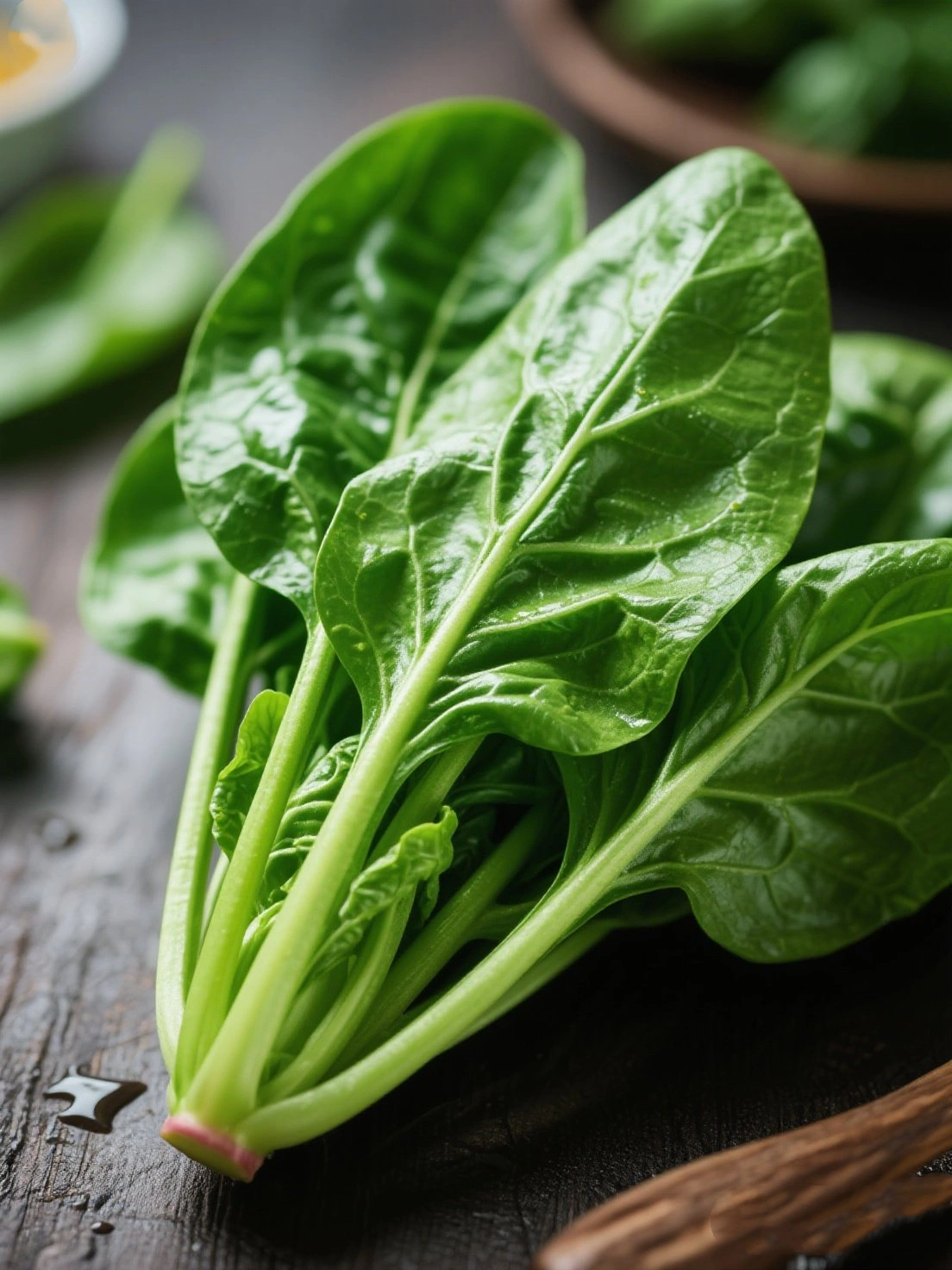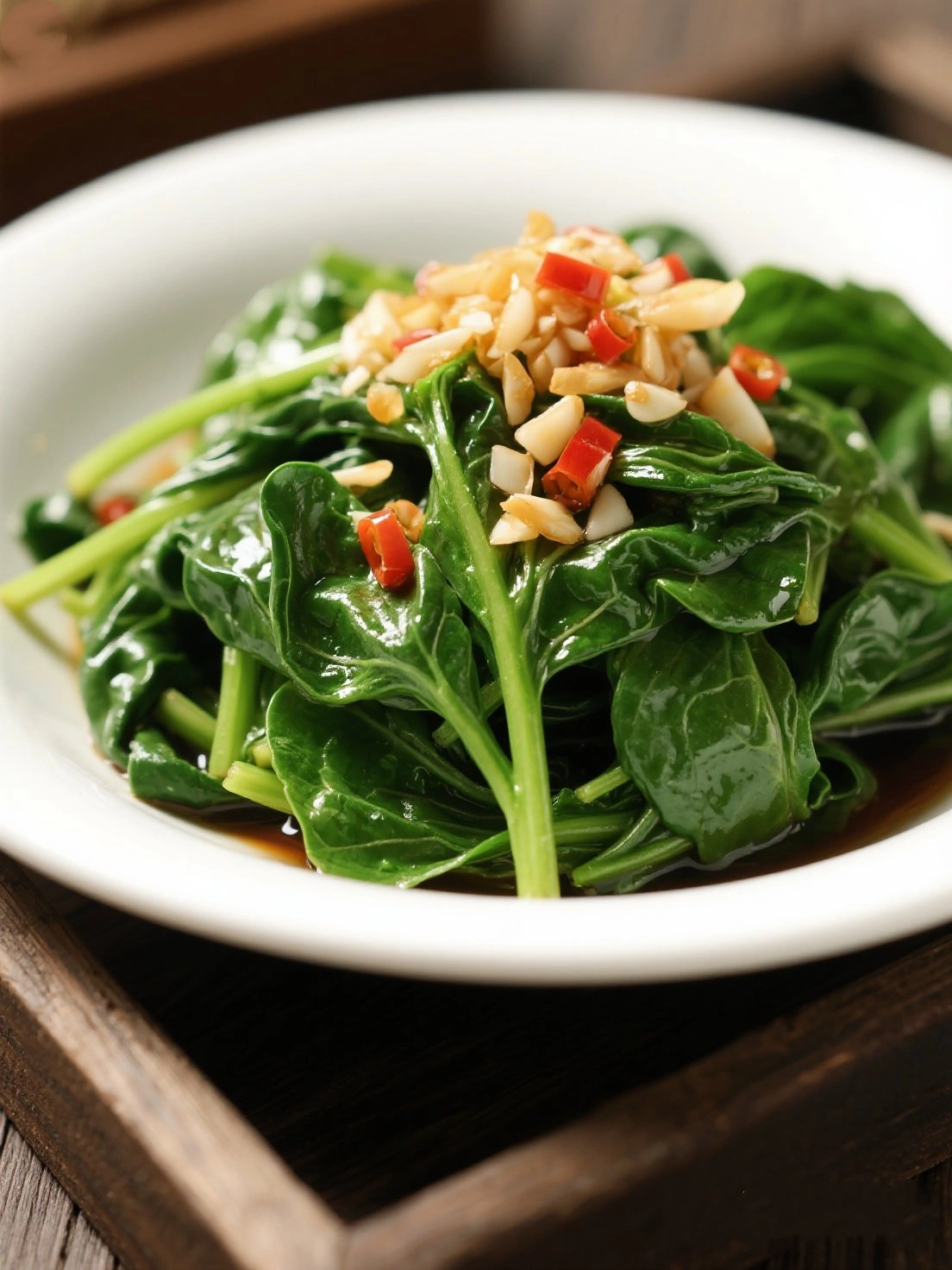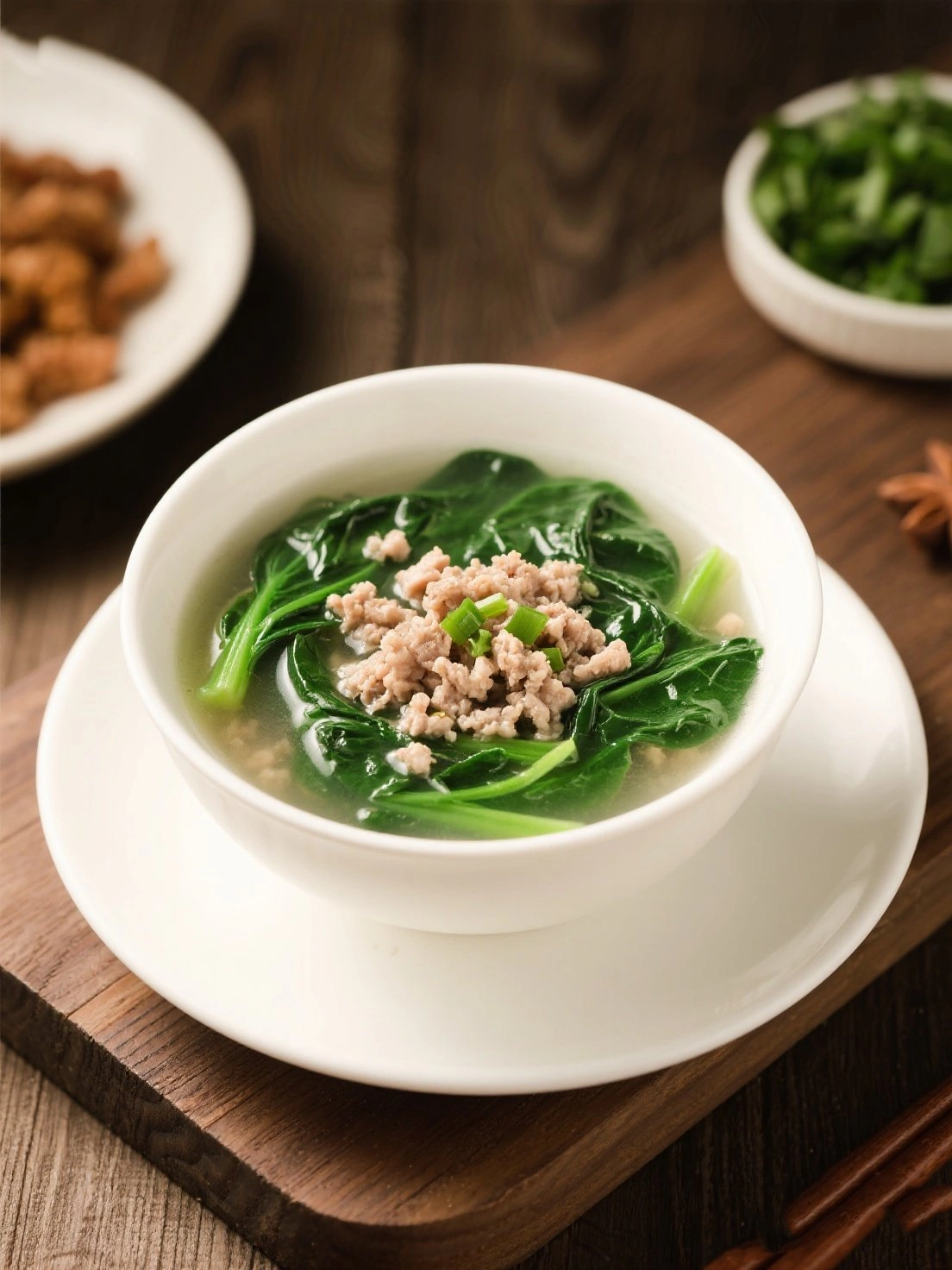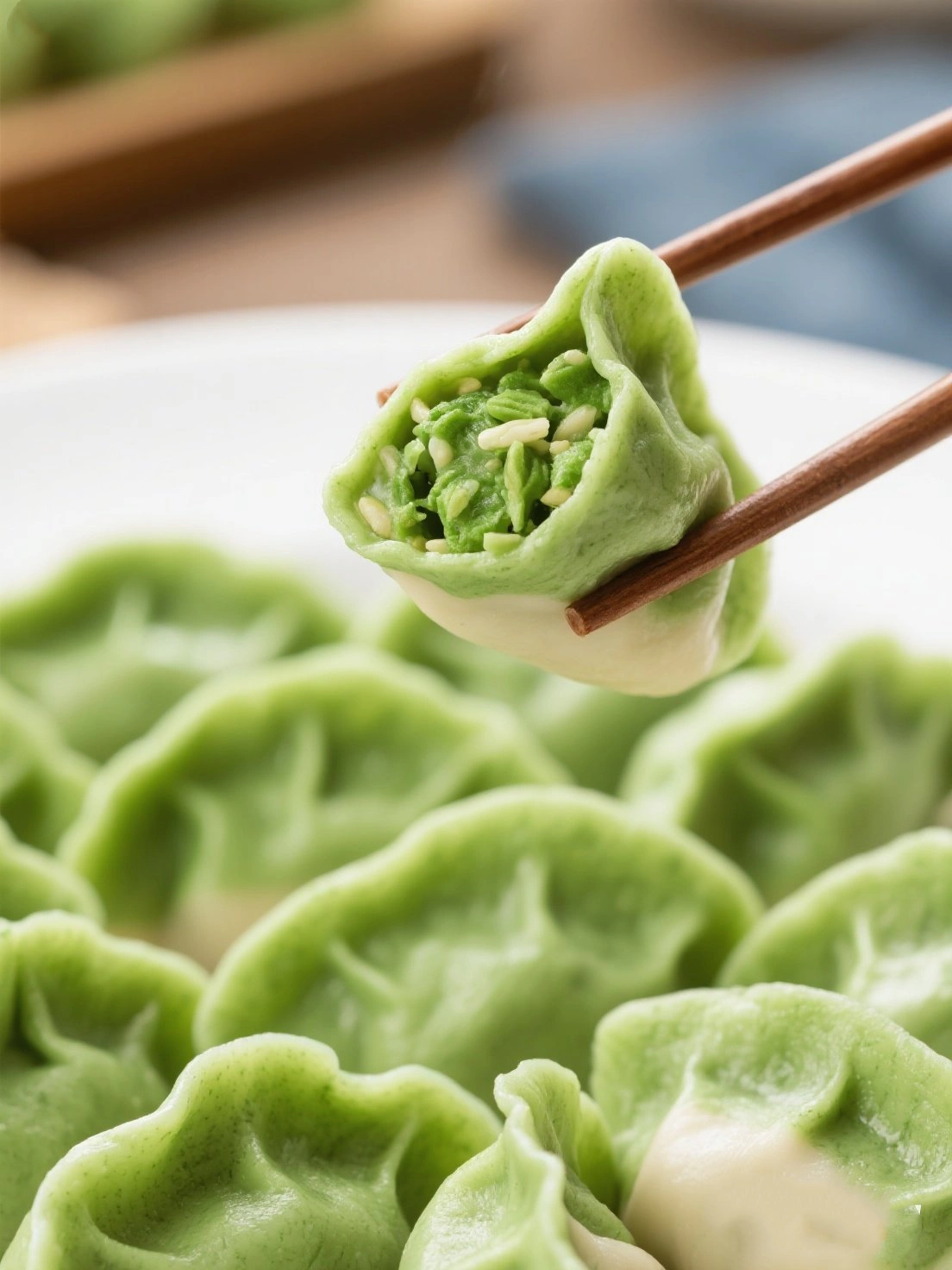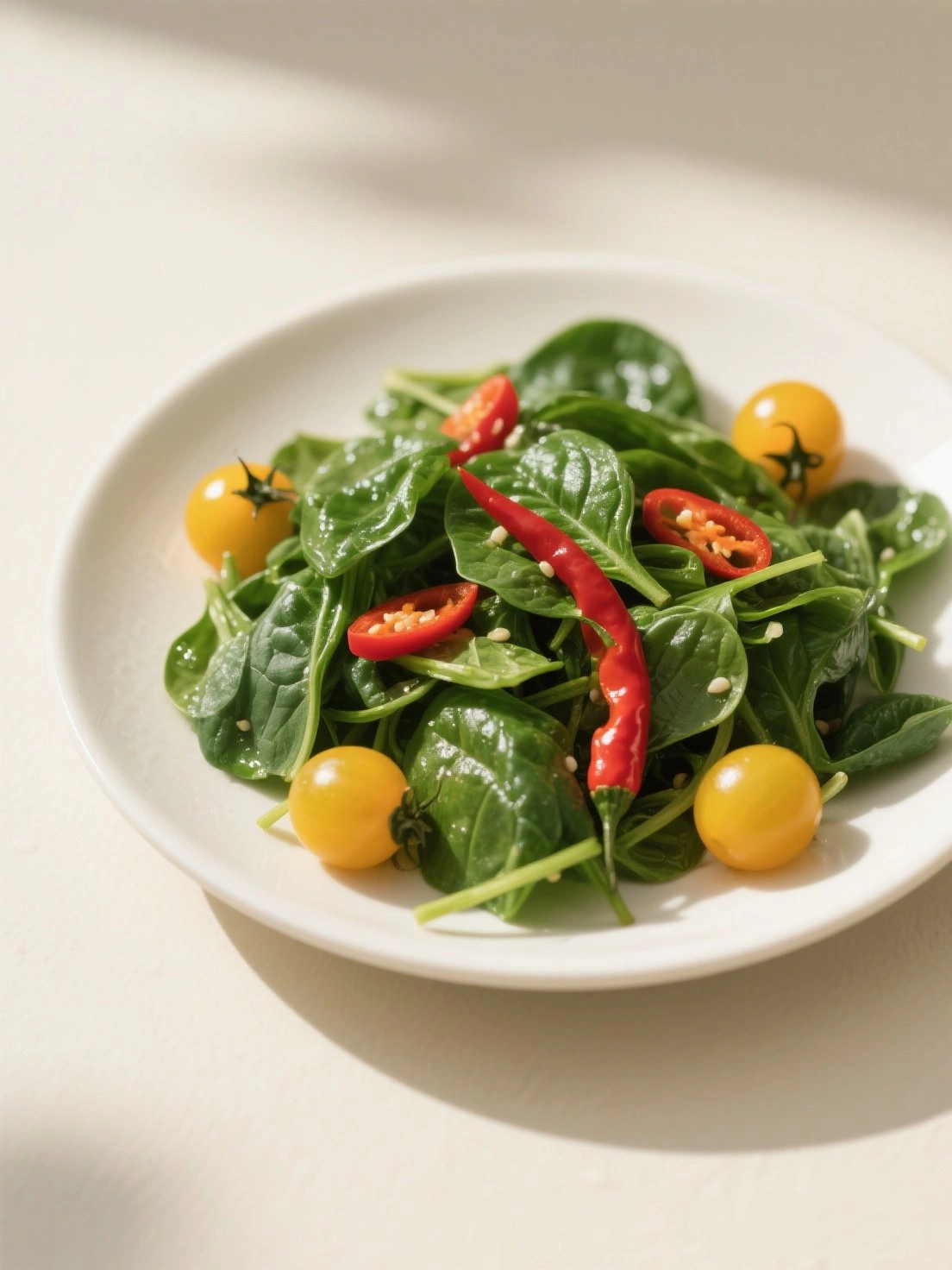Spinach (Spinacia oleracea), originated in ancient Persia before being introduced to China during the Tang Dynasty (7th century). The Chinese name reflects its foreign origins, with "菠" suggesting something that came from abroad. Unlike many vegetables, spinach thrives in cooler weather and became particularly popular in northern Chinese cuisine.
In Traditional Chinese Medicine, spinach is considered sweet and cooling. It nourishes the liver and blood, benefits the intestines, and quenches thirst. Ancient Chinese physicians recommended spinach for constipation, anemia, and to improve vision. The vegetable was often prepared with warming ingredients like ginger or garlic to balance its cooling nature.
Today, China is one of the world's largest producers of spinach, with both conventional and baby spinach varieties widely available. Modern research has confirmed many traditional uses, particularly its benefits for eye health, blood circulation, and bone strength. The tender leaves and mild flavor make spinach ideal for both cooked dishes and fresh salads.
